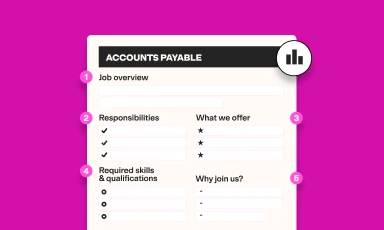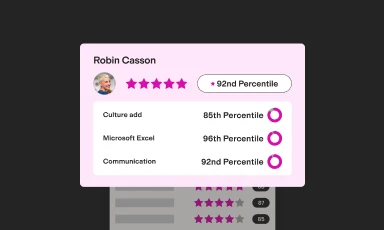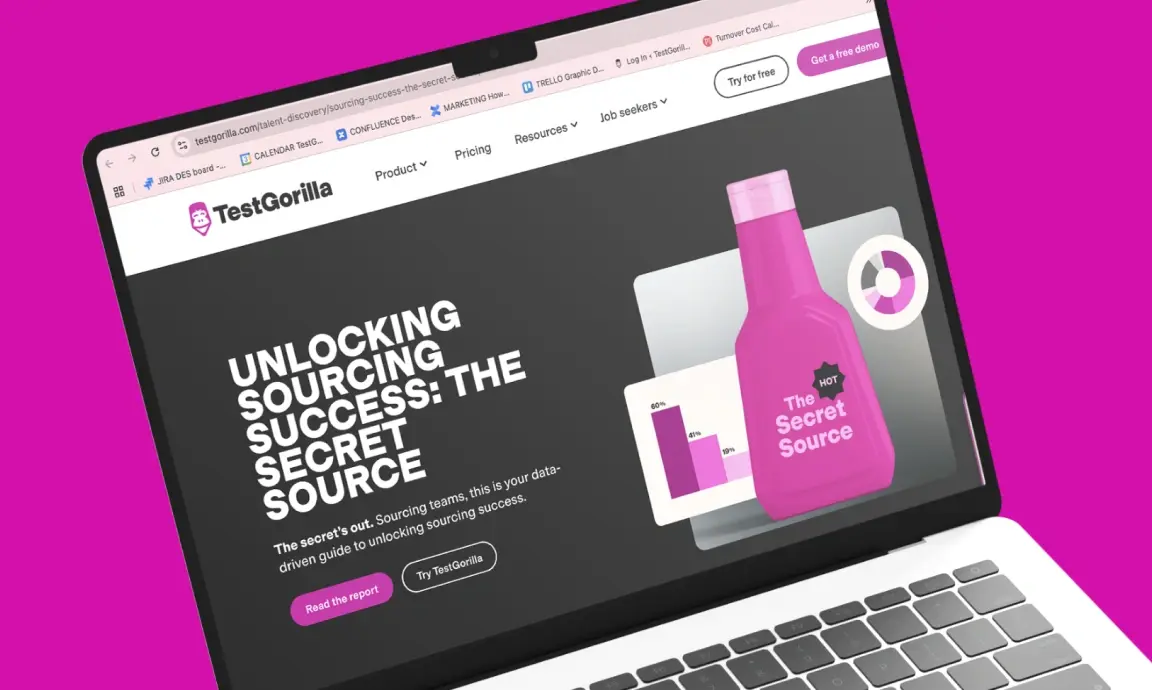The coronavirus pandemic has disrupted hiring. In a matter of weeks, millions of people lost their jobs and companies around the globe froze hiring.
If you’re involved in recruitment, it may seem like there’s nothing to do right now in terms of hiring. But in reality, this is the best time to prepare for what comes next.
When the world economy picks up again, hiring will look completely different. You’ll face new hiring challenges you’ve never faced before, like hiring most employees remotely or dealing with a huge wave of applicants all at once.
We want to help you prepare for the new hiring world.
In this article, we’ll explore what employment and hiring may look like in the new conditions created by coronavirus measures and their impact, and how best to use the current hiring freeze to revamp your recruitment strategy.
How the coronavirus disrupted business as usual
It’s no secret. The coronavirus pandemic has disrupted the global economy. Let’s quickly recap how we got here.
To start, stay-at-home orders led to a mass work-from-home initiative and caused many businesses to close—some temporarily, and some eventually permanently.
The uncertainty created from this situation led to most businesses doing everything they could to mitigate risk. Nobody knew how business plans would pan out or whether they’d be able to hit revenue targets, so businesses quickly turned to where they could cut costs. New initiatives and plans for expansions were put on pause and that led to a hiring freeze.
As early as March 23, 2020, 42 percent of American companies had already frozen hiring, with 28 percent considering doing the same, according to a survey by Willis Towers Watson.
Businesses most affected by the economic climate had to let people go, which led to unemployment soaring. In the United States, where the coronavirus hit hardest, unemployment reached 14.7 percent in April, the highest rate since the Great Depression.
According to McKinsey & Company, over 57 million jobs in the US and over 59 million jobs in the European Union, the United Kingdom, and Switzerland were vulnerable as of the end of April.
That’s how we ended up with a near-global hiring freeze.
Countries will emerge from this crisis, but when they do, the talent and recruiting landscapes will look entirely different than they did prior to the freeze. So this is a great time to look ahead and prepare for the future.
What will the post-hiring-freeze world look like?
Hiring is certain to change in the new business world that will emerge post hiring-freeze. We don’t have a crystal ball, but here are some of the ways employment and hiring are bound to change, and what it means for recruiters.
A sudden surge in hiring
As countries start to “open back up,” each at its own pace and with its own measures in place, economies will begin to rebound. Once there’s increased confidence in the economy, companies will begin to unfreeze hiring.
The U.S. alone, for example, added 3 million jobs in June 2020.
For you, this could mean more positions open at once than you’re used to, so you’ll need methods to increase your recruitment capacity.
A flood of applicants
Because of widespread unemployment, you’ll also see a higher number of applicants per role than you’ve previously experienced.
The upside is that more applicants can increase your chances of finding the right fit for your open roles. The downside is that you’ll have to do a lot more reviewing and evaluating to find that right fit.
You’ll need a plan to screen a high volume of candidates that goes beyond manually reviewing each and every resume.
A wider variety of applicants
Many people who lost their jobs have had to shift their careers to industries that are still hiring. For example, many people in the hospitality, leisure, or culture industries have had to turn to positions in healthcare.
While this shift may be perceived as temporary, it could have the long-term effect of people reevaluating their paths and deciding to pursue careers in different industries.
And because of the layoffs, you’ll also see a wider variety of candidate skill levels—from under-qualified to over-qualified.
Therefore, you’ll need a strategy for evaluating employees’ practical skills and aptitude for learning, rather than traditional experience, to find the candidates with the greatest potential.
Adjustment to remote conditions
The coronavirus has forced the hands of many companies to shift to remote work or create hybrid models that encompass both remote and office options.
Twitter, Facebook, and Google have all shifted to remote work for the foreseeable future, and 74 percent of CFOs surveyed by Gartner expect their companies to stay at least partially remote on a permanent basis.
While remote work can have great benefits for business, such as reducing the cost of rent and operating expenses and potentially boosting employee productivity, it also brings many challenges.
Teams need to shift their communication and collaboration processes online, and while many tools like video conferencing can help with the transition, some things, like the camaraderie and mentorship that rise organically from working together in close proximity cannot be fully replicated in the virtual world. At least not for everyone.
While some employees will embrace remote work and find it more suited to their lifestyle and personalities, others will not. Remote work, like anything else, is not for everyone.
For recruiters, specifically, a remote company setting could mean you’re opening up your candidate pool to every corner of the world.
In addition to the increase of applicant volume, this can also lead to other recruitment challenges as applicants will have a wider range of backgrounds, talents, and native languages.
You may need to adapt your recruitment screening process to evaluate candidates for their skill level in your company’s core language, for example.
A sudden race for new talent
The shift in how we work and live our lives will also mean a shift in the skillsets employers are looking for.
For example, demand for interpreters and translators rose by 268 percent in April. And a shift to a more digital office could mean a greater need for IT support or software developers.
As jobs open up and companies launch their new business plans, there will be big competition for these skill sets at the same time. Recruiters will need to be fast to the punch in identifying and hiring for these skills.
A shift from experience to transferable skills
In the new work environment, adaptability and agility will be crucial—at the company and employee level.
Businesses will be evaluating and reevaluating their models and will therefore be looking for employees with transferable skills that may be able to wear multiple hats or jump between roles—rather than always prioritizing previous experience.
Employees who have a willingness and the ability to learn new skills will be a hot commodity, so employers need to be prepared to identify these skills during the hiring process.
The adoption of automation and new tools will be accelerated
Research from Hershbein and Kahn shows that automation is more quickly adopted during economic downturns. That’s because companies are looking for ways to cut costs, which includes reducing headcount or simply saving their employees time.
This applies not only to tools that help operationally, but tools that help with recruitment.
Pre-employment screening tools like TestGorilla will become the new norm as employers look for ways to hire more effectively and efficiently.
The best insights on HR and recruitment, delivered to your inbox.
Biweekly updates. No spam. Unsubscribe any time.
How you can prepare for the post-hiring-freeze world
That brings us to our action plan. Given what the post-hiring-freeze world will look like, what can you do to prepare for the change?
Here are some game-changing steps you can take:
Determine the immediate impact on your business
To prepare to hire new talent after the freeze, you’ll need to know what your business is most likely going to look like.
In some ways, everyone is a startup now. Even the most static companies are shifting their business models or changing how they carry out long-established processes.
Work with your HR team and management to determine how your company will adapt in the short- and long-term.
Start by asking asking questions like:
Will we return to a physical office, stay remote, or take a hybrid approach?
Will we shift to hiring in different geographies?
What policies will change?
Will we adapt employee benefits (e.g. replace office lunches with a work-from-home stipend)?
What will rewards and recognition look like?
Will salaries change?
How will our training change?
How will we adapt our employee referral program?
You may or may not be the one making these key decisions, but by getting answers in advance, it can help you put together a smarter post-hiring-freeze recruitment strategy.
Refresh your employer branding
Based on the answers to the questions above, you can begin to map out changes to your employer branding. Even a single adjustment can alter your company culture significantly, let alone a few of them.
Candidates—especially those who were recently laid off—will be looking for an employer that truly cares about its employees and can provide some stability to their lives.
Refreshing your online branding to authentically reflect your (potentially updated) company culture will go a long way towards making your roles stand out from your competitors.
You can improve your employer brand even during the hiring freeze by:
Strongly promoting your company values to connect with the right candidates
Revamping your job descriptions to help candidates understand what you’re looking for in your new positions when you’re ready to post them
Refreshing your career page to reflect what it’s like to work at your company, especially if your permanent work environment will be affected
Revising your employer branding strategy on social media to reach the right candidates where they already hang out online
Asking existing employees for reviews on job platforms to help candidates understand the work environment from the employee perspective
Publicizing temporary and permanent company policies that reflect the changing work environment and how you’re responding to it. Future candidates will gravitate towards those who treat their employees well during the crisis.
Employer branding is the story you tell candidates about your company. And if that story doesn’t accurately reflect who you are or doesn’t fall on the right ears, your chances of finding the right candidates for your post-hiring-freeze positions will significantly decrease.
Use the hiring downtime to refresh your employer branding and amplify its volume so you can reach the right candidates with the right message at the right time.
Determine what your ideal candidates look like
Based on what may change (or may not change) about your business, think about what the “ideal” candidate looks like in this new world.
What new roles will exist that don’t exist now? What hard skills will those roles require? What skills will your organization require that you don’t have right now? What soft skills or traits will become more valuable?
For example, if your company is shifting to remote work, you may want to place a new priority on skills like:
Adaptability – process and even roles are bound to change as the team adapts to the new conditions and new hires need to be able to change with them
Digital communication – remote roles mean more email, video, and chat so new hires should be comfortable with these tools
Problem solving – no manager in the room means more self-driven decision making
Or if your company is adjusting its offers and services to meet a shift in demand in the market, you’re likely to prioritize different skills:
Technical expertise – developing new offers or services can require technical expertise and experience lacking from your current team
Leadership – a change in direction can necessitate new or additional leadership skills to help steer employees in the new direction
Creativity – putting together and successfully launching new offerings in the market requires just as much creativity as it does technical expertise
There is no single ideal candidate for any company or any position, especially in a changing environment. The key is to identify how your business, culture, and roles will change and to map out the skills and traits and candidates should bring to be successful in the new role and environment.
Preparing and adjusting your ideal candidate profiles now, while things may still be on the quiet side, can give you a head start when you’re ready to start rolling. You’ll know exactly what your new positions look like and what to look for in candidates to find great fits.
Modernize and optimize your recruitment tech
Review your tech stack to determine where improvements can be made. Businesses are looking for efficiencies right now, so by identifying tools that will make recruitment and hiring easier, you can come out a hero!
Remember, in this post-hiring-freeze world, you will have to be ready for increased application volume and you’ll have to act faster given the hiring competition.
If you don’t, you could end up understaffed, which could lead to increased turnover, which only exacerbates your hiring problem—and none of us want that!
There are two tool categories you should focus on.
The first is your Applicant Tracking System (ATS). Chances are, you’re already using an ATS, as a Jobscan survey found 98% of Fortune 500 companies use one.
In this new world, an ATS will be crucial for handling the influx of candidates, resumes, and all the communication around it. If you’re already using an ATS, determine if it will be able to meet your future needs, and if you’re not, get one ASAP!
The second essential tool is a candidate screening tool. Not only will this help you handle a higher volume of candidates, but it will also help you pre-screen candidates for specific skills using skills assessments.
For example, by using TestGorilla, you can create well-rounded pre-employment assessments combining any of 7 types of screening tests to identify you ideal candidate:
Personality & culture fit
Cognitive ability
Language
Situational judgment
Role-specific skills
Programming skills
Software skills
Screening candidates for their technical skills, soft skills, and personality traits will be a must in this new world of high-volume fast-pace hiring. With the flexibility to mix pre-made, validated tests into the perfect combination for your role, you’ll move your hiring forward by leaps and bounds.
If you’re suddenly hiring internationally, for example, you can pre-screen candidates for their language skills (whether it’s proficient English or intermediate Portuguese). This saves you from having to speak with them to find that out.
But this also helps you hire better candidates for the new soft skills you’ve identified as necessary for your ideal candidate. For example, by screening for cognitive abilities, you’ll be able to identify candidates with great problem solving skills or reading comprehension.
For an even border perspective, you can screen candidates on culture fit, checking candidates’ alignment with both company values and role-specific traits and interests. And whether you’re going remote, adopting a hybrid model, or returning to the office, the work style survey can help you understand in which environment each candidate can thrive to make the best decision for your team.
Armed with your ideal candidate profile, you can start creating screening assessments today to meet the demands of the accelerated post-hiring-freeze recruiting tomorrow.
Get ready for the post-hiring-freeze world
The hiring freeze won’t last forever. As the world is learning to navigate and manage the novel coronavirus pandemic, countries are opening back up and so are their businesses.
But they’re opening up to a new “normal.” And this new normal is ushering changes in the workplace and affecting how we do hiring and recruiting.
Whether you’ll need to handle a higher volume of applicants as the recently unemployed return to the workforce, hire at a higher pace, manage a shift to remote work, or look for candidates with skills and experience that are new to you—you’re certain to experience change. But change doesn’t have to have a negative impact when you prepare for it ahead of time.
Use this hiring downtime to get ahead in the game by preparing for the new hiring market on the horizon. When you understand what’s coming, how your company is changing, and how you can both reflect and meet those changes in your post-freeze hiring, you’ll be well equipped to build a team that’s even stronger and better than before.
Related posts
You've scrolled this far
Why not try TestGorilla for free, and see what happens when you put skills first.


















